INDONESIA | The Temples of Bali
Sunday, January 13, 2019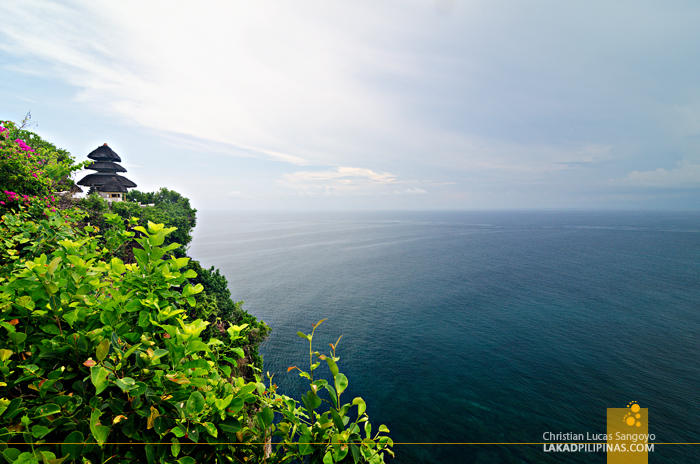
Bali, the Land of the Gods. Separated from mainland Indonesia, this island paradise has a belief unique from the rest of the country, practicing Hinduism instead of Islam. With it comes temples, lots of them, sacred grounds carved on mountainsides, built over lakes, and standing over cliffs, all dedicated to their faith’s gods. And they literally have millions of gods, thirty three million to be exact.
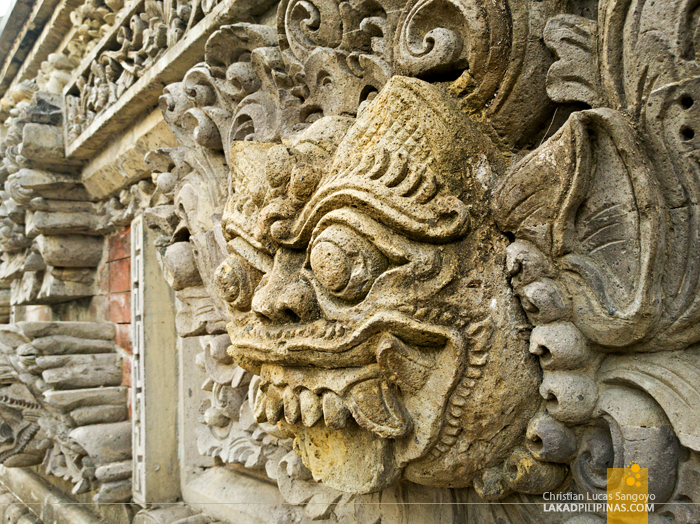 |
| HINDU IMAGERIES ON BALINESE TEMPLES |
Imagine how hard it was for us, unfamiliar with Hinduism, to choose which temples to visit—each Balinese village having no less than three temples on their soil. We consulted guidebooks and read about Sad Kahyangan, the six cardinal temples of Bali, the holiest and most revered pura or temples in the whole of the island. But not all of these are easily accessible, being located on the heart and perimeters of Bali, and this island is huge.
| TEMPLES OF BALI WHAT’S INSIDE? ► Temples Best Explored From Kuta • Uluwatu Temple • Tanah Lot Temple ► Temples Best Explored From Ubud • Taman Saraswati Temple • Goa Gajah • Tirta Empul Temple • Gunung Kawi Temple • Batuan Temple • Ulun Danu Bratan Temple • Besakih Temple |
 |
| THE ICONIC FLOATING TEMPLE OF BALI |
A guide, we definitely needed. Having no reliable public transport system, it was just impossible to visit the major temples of Bali DIY. Taking the services of Bali Golden Tour, we were able to explore Bali’s worship places on a relaxed pace, and with our very helpful guide, Putu Yudhi (and Made Dejus Palguna from our previous trip to Bali), we covered most of the more important shrines of Bali, and then some.
 |
| A CELEBRATION HELD AT PURA TANAH LOT |
Some temples are within striking distance with each other, while others require more than an hour’s ride to access. To maximize our time, we bundled our temple tours with visiting a few other sights, like Bali waterfalls, Bali beaches, and Bali traditional villages. We then divided the temples by its proximity to the two major tourist towns on the island, Kuta and Ubud.
 |
| ULUWATU TEMPLE GROUNDS |
Note that there’s really no strict dress code when entering temples, however, guests are required to wear a sarong. You can bring your own, or if you don’t have one, the guys at the entrance gates have some which you can borrow, free of charge. Most temples require a small entrance fee, with some asking only for donations.
TEMPLES BEST EXPLORED FROM KUTA
ULUWATU TEMPLE
ENTRANCE FEE: IDR 30,000.00 | OPENING HOURS: 7:00AM TO 7:00PM DAILY | GPS MAP: -8.829354,115.0840778
Pura Uluwatu, as the locals refer to it, is located in the Badung Regency and is part of the six Sad Kahyangan. The small temple is perched on a cliff facing the Indian Ocean, with raging waters slamming the rock face seventy meters below.
To access it, one has to walk down a tree-covered park home to macaque monkeys. Avoid having anything dangling on your body as these creatures snatch these for a living, literally. You can retrieve your stolen belongings by having one of the staff exchange it with the monkey for food. It’s a vicious bartering cycle that we personally encountered.
The temple itself is off-limits to visitors, but you can view its façade along the perimeter of the cliff face. And if you time your visit during sunset, you can also watch a Balinese Ramayana kecak dance.


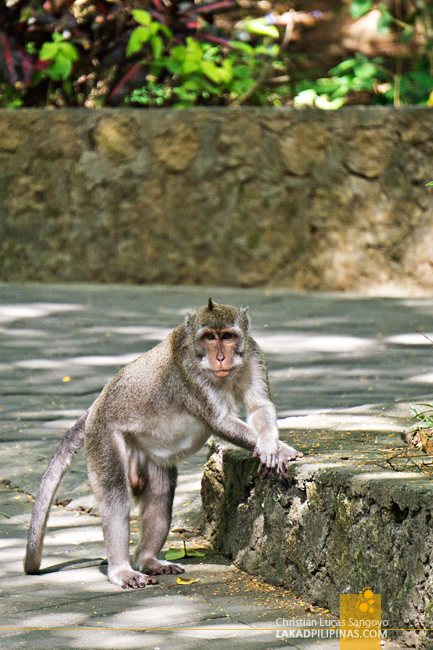


TANAH LOT TEMPLE
ENTRANCE FEE: IDR 60,000.00 | OPENING HOURS: 7:00AM TO 7:00PM | GPS MAP: -8.621166,115.0846753
One of the most iconic of Bali’s temples, Pura Tanah Lot is set on a rock islet about twenty meters from the shoreline off Tabanan Regency, giving it its name which means Land Sea in Balinese. It is one of the seven pura segara or sea temples that honor the gods of the sea and provide a chain of spiritual protection to the island.
The islet can be accessed by guests during the ebb of the tide, but crossings can get dangerous when the water rises due to the strong waves in the area. If ever you find yourself visiting during high tide, you may still enjoy the view of the temple along the shore or on the numerous restaurants along a low cliff facing Tanah Lot, the dishes we tried are surprisingly affordable and we got a nice high vantage of the rock islet too. Time your visit during the sunset, and you’d be rewarded with a picture-perfect view of the temple.




TEMPLES BEST EXPLORED FROM UBUD
TAMAN SARASWATI TEMPLE
ENTRANCE FEE: FREE | OPENING HOURS: ALWAYS OPEN | GPS MAP: -8.5059516,115.2593039
The Pura Taman Saraswati or Lotus Temple is one of the most popular temples and an icon in downtown Ubud. The temple, erected in 1951, can be accessed through three typical Balinese agung gates, but these are usually closed off to visitors. We were able to enter its inner court when we stayed at the Puri Saraswati Bungalows, which has a private gate, being part of the Royal Palace before. But even without entering, the pathway leading to the gates are reason enough to visit. The temple got its name from the massive lotus pond that flank both sides of the bridgeway and these are particularly beautiful when in bloom.
Taman Saraswati is fronted by an open-air restaurant and a Starbucks Coffee, making it one of the most easily accessible temples to visit in Bali.

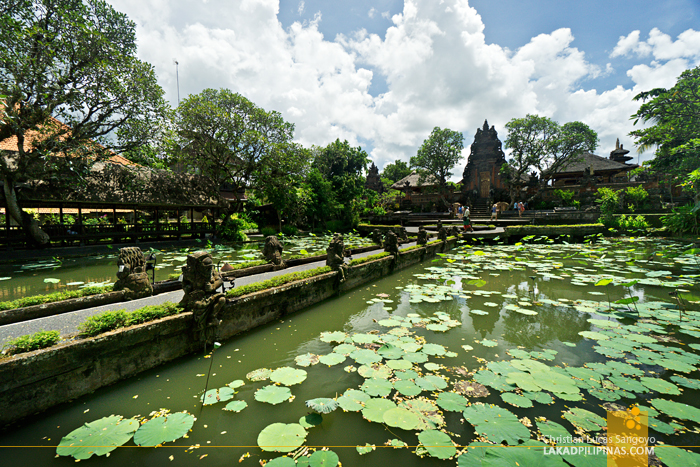


GOA GAJAH
ENTRANCE FEE: IDR 15,000.00 | OPENING HOURS: 8:00AM TO 4:30PM | GPS MAP: -8.5233969,115.2846644
Situated on the lower part of downtown Ubud, Goa Gajah, or the Elephant Cave, is a 9th century sanctuary believed to have been built for spiritual meditation. The site is unique in that it has both Hindu and Buddhist imageries—the likeness of Ganesh standing alongside stupas and chattra. The area was uncovered by Dutch archeologists in 1923, and the bathing pool, thirty one years later.
To get there, one has to climb down some flights of stone stairways. The main cave, which has a massive carving of an elephant presumed to be Ganesh, is quite shallow and there isn’t really much to see except for three small niches containing a lingam, yoni, and an image of Ganesh. The complex extends further down over another series of stairs, passing over a river.
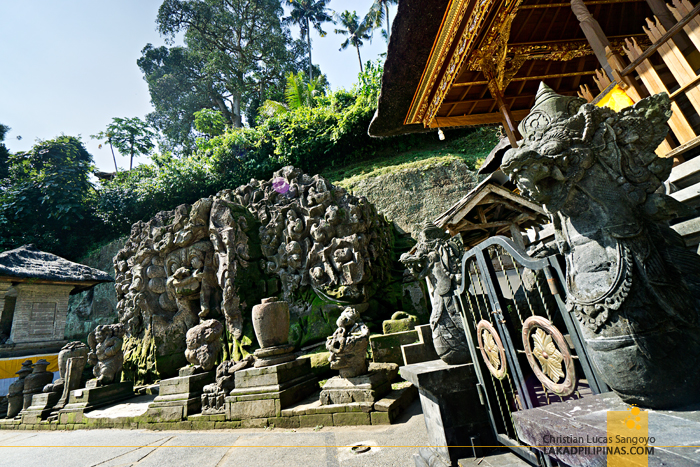

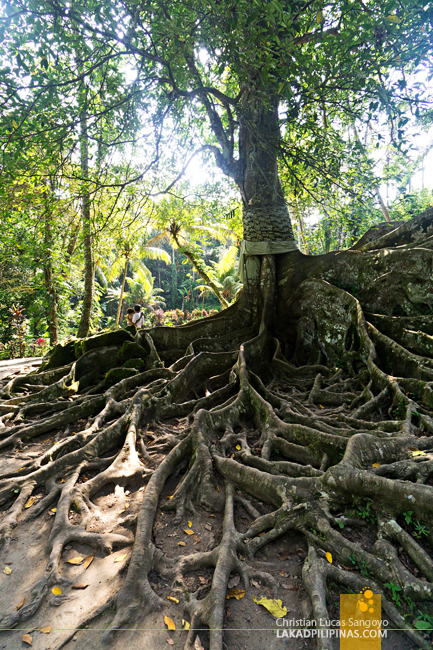
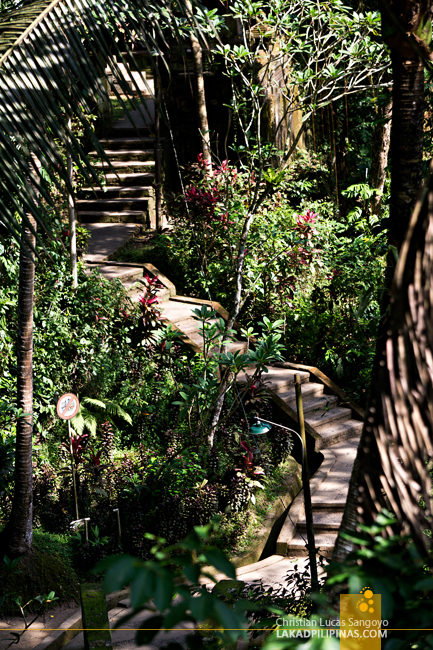

TIRTA EMPUL TEMPLE
ENTRANCE FEE: IDR 30,000.00 | OPENING HOURS: 7:00AM TO 5:00PM DAILY | GPS MAP: -8.415877,115.3130661
Pura Tirta Empul is one of the more unique temples in Bali. It consist mainly of a bathing pool or a petirtaan where the faithful—and visitors too—can actually go down and immerse oneself on the natural spring water. The Balinese people believe that the water that sprouts on the fountains is holy and can purify a person, hence the name Tirta Empul or Holy Spring.
The temple has two bathing pools, but from our visit, only one seems to be in use while the other is left derelict with thick moss and algae growing on its surface. I also saw a large pool adjacent to this with really huge koi fishes being fed by locals and visitors.


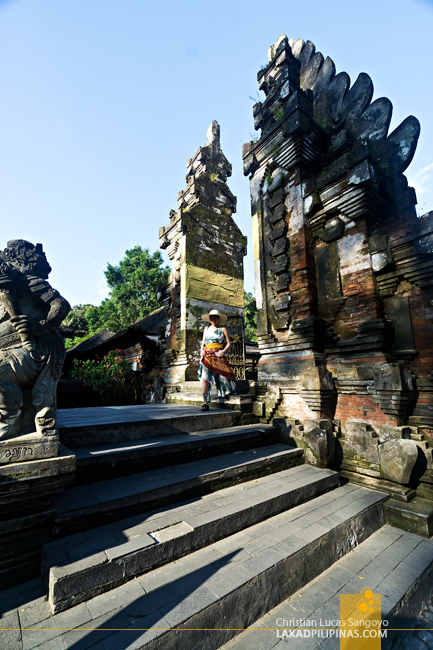

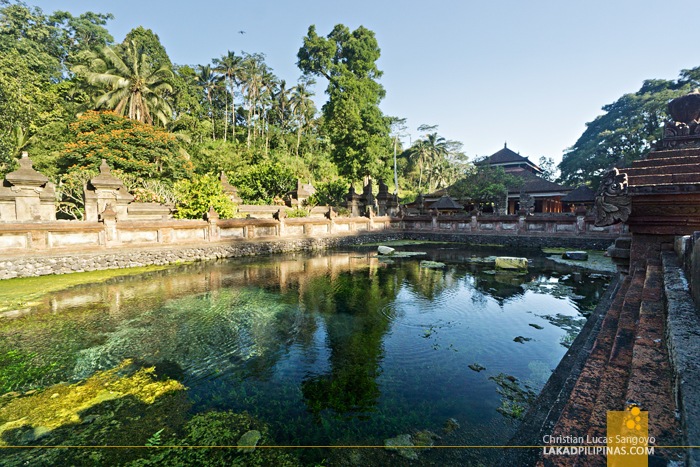
GUNUNG KAWI TEMPLE
ENTRANCE FEE: IDR 15,000.00 | OPENING HOURS: 7:00AM TO 5:00PM | GPS MAP: -8.4234697,115.3083253
Dubbed as the Mountain of the Poet, Pura Gunung Kawi isn’t a temple one can visit on a whim. Getting there requires a heart-rending three hundred sixty steps down, and another set going up. But it’s definitely worth the effort just to see the massive funerary shrine in the middle of two rivers dedicated by an ancient king to his favorite queens.
The ten shrines or candi rise up to a height of seven meters and are carved directly on the walls of the valley. Shaped like burial towers similar to those found on Central Java, these are believed to function as memorials to royalties.





BATUAN TEMPLE
ENTRANCE FEE: DONATION | OPENING HOURS: 7:00AM TO 5:00PM DAILY | GPS MAP: -8.5818659,115.2738165
Pura Batuan is a minor temple we passed along the village of the same name during one of our outings. Being a humble village temple, it isn’t really a part of any prominent temple groups in Bali. But still, it is a popular stop for tourists going about.
Its popularity might be due to the number of intricate carvings and ornamentation inside its walls, its quaint pool, or its unusually massive agung gate. But don’t discount Batuan Temple just yet, being founded in the year 1020, it is, surprisingly, almost a thousand years old!
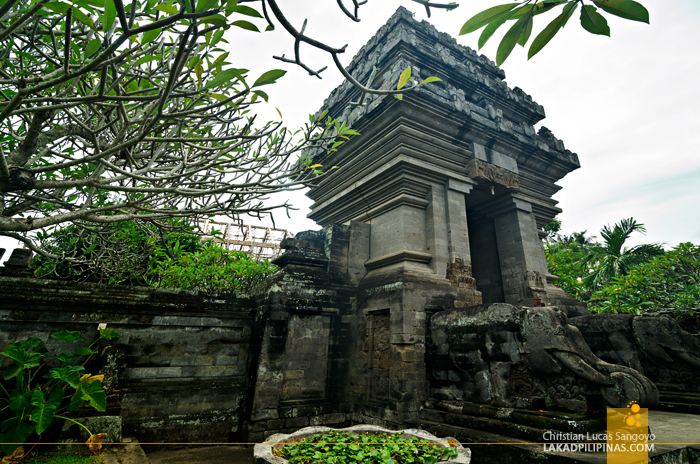
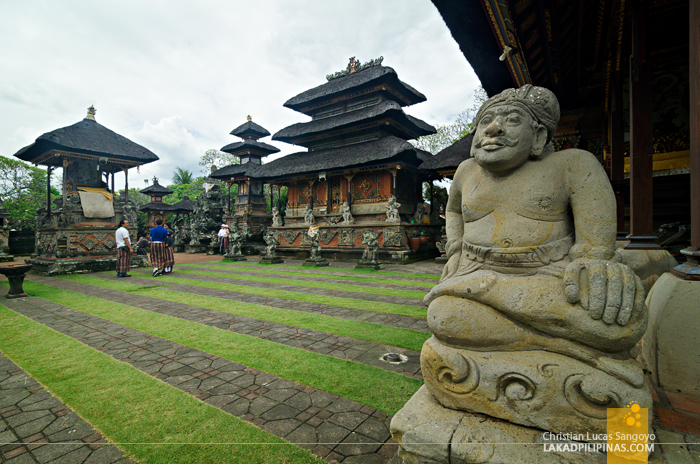


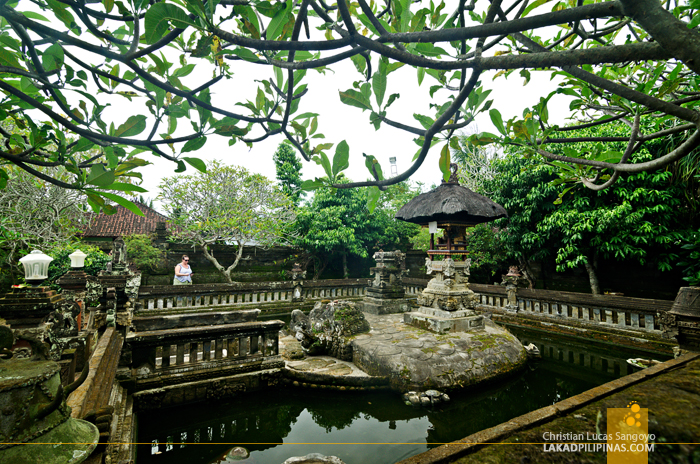
ULUN DANU BRATAN TEMPLE
ENTRANCE FEE: IDR 50,000.00 | OPENING HOURS: 5:00AM TO 7:00PM DAILY | GPS MAP: -8.2753486,115.1631196
The poster boy of Bali temples, Pura Ulun Danu Bratan or the Floating Temple in Tabanan Regency is probably the first temple that comes to mind when you mention Bali. Situated on the edge of Lake Bratan, a thousand meters above the sea and surrounded by the Bedugul Mountain range, this temple is one of the most picturesque on the island.
Constructed in 1633, its eleven-storey main tower or pelinggih meru, while dedicated to the Hindu gods Shiva and Parvatti, is also home to a statue of Buddha. The temples in the complex, however, are not open to tourists.
Even so, its towering façade and the surroundings itself are postcard-perfect. Point in fact, Lake Bratan, being the dominant source of water for the rivers and springs around Central Bali, has a unique 9th-century irrigation system called subak that has a stamp of a UNESCO World Heritage Site.




BESAKIH TEMPLE
ENTRANCE FEE: IDR 60,000.00 | OPENING HOURS: 8:00AM TO 5:00PM DAILY | GPS MAP: -8.3743817,115.4487587
Pura Besakih, Bali’s Mother Temple, is the largest and most important shrine in the whole island. Located in the Karangasem Regency, the two thousand-year old temple is perched a thousand meters high off the south-western side of the highest and holiest mountain in Bali, Mount Agung. It is one of the six Sad Kayahngan temples of Bali.
Visiting the temple, most tourists are pestered by so-called required “guides” at the foot of the path leading to the entrance that would ask for mandatory donations. Note that you do not need to have a guide with you to visit this place. After purchasing your ticket and they tell you that you need a guide, simply reply that you’re exploring on your own. After passing the gate, which is about a kilometer away, if anyone stops you or tells you otherwise, don’t say anything, ignore them, and simply go straight to the temple.
The six-level complex, which can be accessed along the slopes of the mountain via stairways, consists of twenty three separate structures, the main one being Pura Penataran Agung. Festivals are held here at least seventy times a year, with two major ones being celebrated twice annually. And true enough, during our visit, we chanced upon one of the major festivals; the ground was replete with activities, with locals praying, being blessed, and sending offerings to the gods.

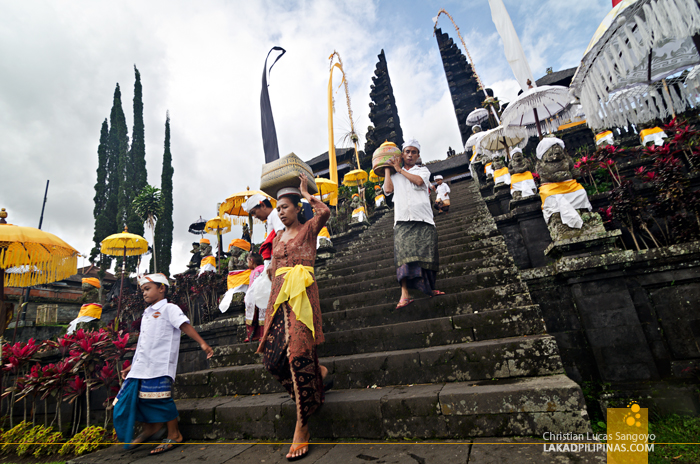



~ BALI GOLDEN TOUR HOSTED OUR DAILY EXCURSIONS IN BALI. VIEWS AND OPINIONS ALL MINE.
 Bali Golden Tour
Bali Golden Tour
Contact Number: +6285100966391
Email: baligoldentour@outlook.com
Website | Facebook
Full Day Tour Package Rate: IDR650,000/car (good up to six persons)


























































0 comments